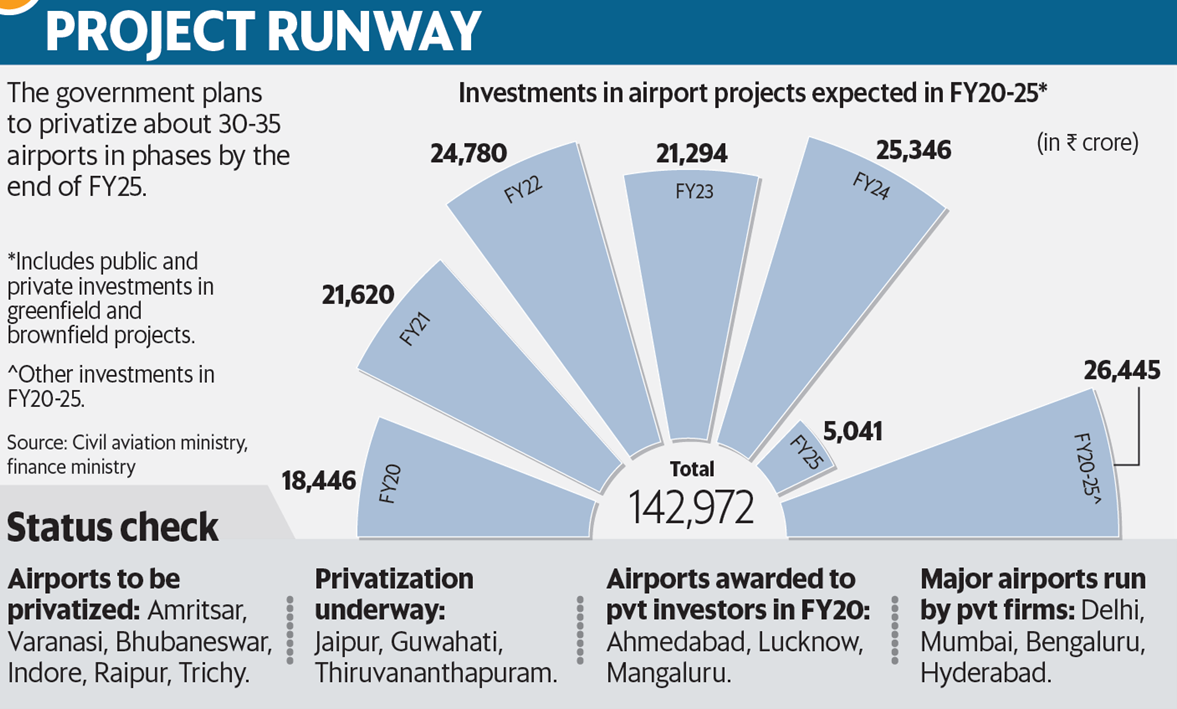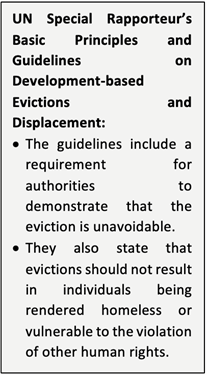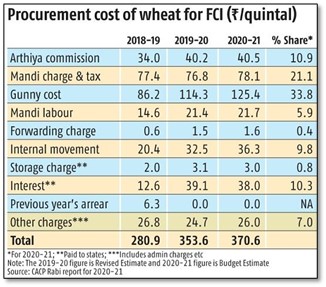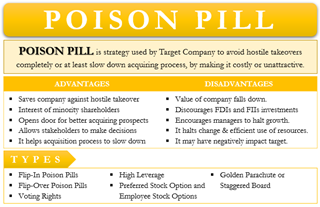Tuesday, 26th April 2022
World Economic Outlook Report
In News
The International Monetary Fund has released its biannual World Economic Report, in which it projected a “fairly robust” growth of 8.2 per cent for India in 2022, making it the fastest-growing major economy in the world, almost twice faster than China’s 4.4 per cent.
What does the report say?
- The global growth has been projected at 3.6 per cent in 2022, down from 6.1 per cent in 2021.
- The downgrade largely reflects the war’s direct impacts on Russia and Ukraine and global spillovers.
- In 2021, India registered a growth rate of 8.9 per cent. In 2022, India is projected to grow at 8.2%, 8 percentage points lower than the previous forecast for the same period last year.
- By 2023, India is estimated to grow at 6.9 per cent.
- Observing that both Russia and Ukraine are projected to experience large GDP contractions in 2022, it said the severe collapse in Ukraine is a direct result of the invasion, destruction of infrastructure, and exodus of its people.
- In Russia, the sharp decline reflects the impact of the sanctions with a severing of trade ties, greatly impaired domestic financial intermediation, and loss of confidence.
- In addition to the war, frequent and wider-ranging lockdowns in China – including in key manufacturing hubs – have also slowed activity there and could cause new bottlenecks in global supply chains.
- Inflation is expected to remain elevated for longer than in the previous forecast, driven by war-induced commodity price increases and broadening price pressures.
- For 2022, inflation is projected at 5.7 per cent in advanced economies and 8.7 per cent in emerging market and developing economies.
- Higher, broader, and more persistent price pressures also led to a tightening of monetary policy in many countries.
Significance for India
- Comparing expected GDP growth rate for 2022 globally, India has best growth rate across all the major economies in the world.
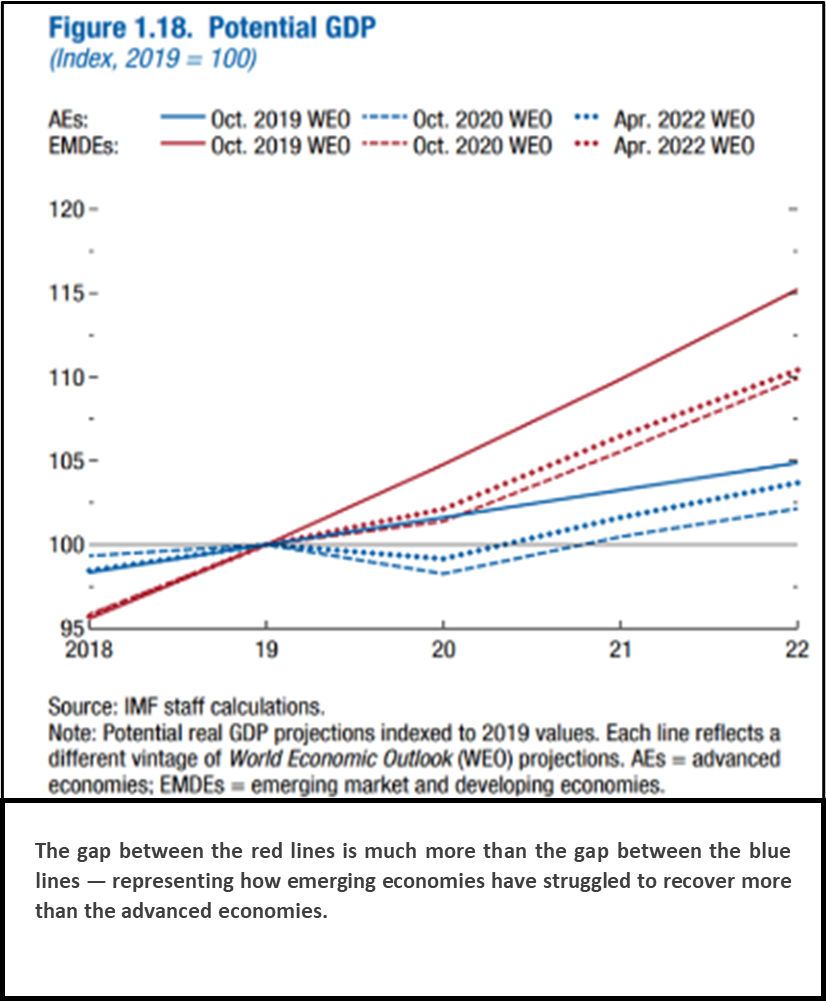
-
- It is more than double the average growth rate of both the advanced economies (3.3%) as well as the emerging economies (3.8%).
- But, with India constituting around 18% of the world population has a share of only 7% of world GDP. This implies that India needs to grow at a greater pace to be competitive in the world market.
- For example, China has around 18.5% of the global population and contributes to 18.6% of global GDP.
- In any case, a downgrade of GDP Projection may not seem favourable for a developing country like India.
Emerging risks:
- The report states that risks for the world economy in the near future are large and to the downside.
- These include a worsening of the war, a worsening of the geopolitical tensions, a resurgence of the pandemic, increased social tensions, a worsening slowdown in China, higher inflation expectations, higher interest rates etc.
Sources:
Domestic patent filings
In News
Domestic patent filings have outnumbered international applicants in India for the first time.
About the News
- As per the Ministry of commerce and Industry, the number of domestic patent filing has surpassed the number of international patent filing during January-March 2022 for the first time in 11 years.
- According to official data, over the last seven years, the number of patent filing increased by 50 per cent. There has also been a nearly five-fold jump in grant of patents in 2021-22 to 30,074 as compared to 2014-15.
- As per India Patents report launched by the National Association of Software and Services Companies (Nasscom), the US remains a key export market for India. Over 9,500 patents were filed by India domiciled companies in the US between 2015-2021, an increase of ~47 per cent over 2015 and 2019.
- All these steps are expected to take India a step closer to its ambition of being in the top 25 nations of Global Innovation Index which was 46 in 2021.
What are the major highlights of the findings?
- More patents by Indians: Of the total of 19,796 patent applications filed, 10,706 or 54% were filed by Indian applicants as compared to 9,090 by non-Indian applicants.
- Technology innovation is gaining pace in India with Indian companies having filed 1,38,000 tech patents in India from 2015 to 202.
- Start-ups have been key contributors in terms of technology innovation.
- In terms of key segments, 21 per cent of the tech patents were related to Software Applications and Healthcare and Medical Devices, the leading segments.
- Emerging Technologies: The share of emerging technologies continues to grow in technology patents. Over 50 per cent of the patents filed during 2015-2021 were related to emerging technologies. AI patents more than doubled in the period 2015-2021 compared to 2015-19. Over 1,300 patents were filed in the AI domain during 2015-2021.
Government efforts in Increasing Patent Filing
- Reduced fees: Key initiatives such as reduction in patent filing fee by 80 per cent for eligible educational institutions.
- Promoting digital filings: A 10 per cent rebate has been provided in fees for online filing vis-à-vis physical filing of trade mark applications.

- Improving efficiency: Government has reduced patent examination time to 5-23 months now from 72 months as in December 2016.
Sources:
Chernobyl Disaster
On April 26, 1986, a devastating environmental catastrophe occurred at the No. 4 reactor in the Chernobyl Nuclear Power Plant, near the city of Pripyat in the north of the Ukrainian SSR in the Soviet Union. A large amount of radioactive material was released into the atmosphere due to fire. It is considered the worst nuclear disaster in history both in cost and casualties. International Chernobyl Remembrance Day is also observed on April 26 every year to mark the nuclear accident. It exposed around 8.4 million people in the three countries to radiation. Scientists have estimated that the zone around the plant will not be habitable for up to 20,000 years.

Sources:
Human Rights Watch World Report 2022
In News
The Human Rights Watch, an international non-governmental organization released its World Report 2022 about the state of democracy and human rights in more than 100 countries across the globe.
Observations made in the report
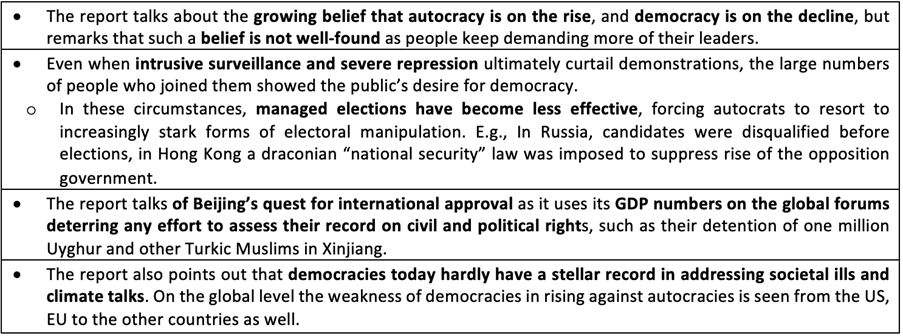
Observations made on India

Overview of human rights in India
- The foundation of modern human rights is the Universal Declaration of Human Rights (UDHR). The 30 articles of the Declaration were adopted in 1948 by the United Nations General Assembly, and over time these have been integrated into national laws and international treaties.
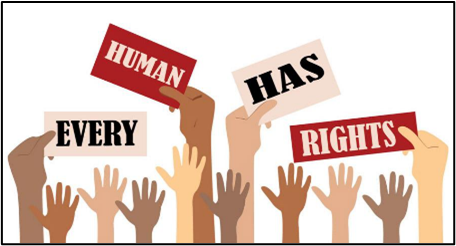
- The core values of the UDHR - human dignity, fairness, equality, non-discrimination - apply to everyone, everywhere regardless of nationality, sexuality, gender, race, religion or age.
- In India, human rights take root in the Vedic texts, the Bhagwat Gita, Jain and Buddhist texts and the Quranic verses.
- The modern version of human rights jurisprudence may be said to have taken birth in India at time of the British rule. When the British ruled India, resistance to foreign rule manifested itself in the form of demand for fundamental freedoms and the civil and political rights of the people.
- When India became independent, most of the economic, social and cultural rights proclaimed in the Universal Declaration of Human Rights was incorporated as fundamental rights in part IV of the Indian Constitution under Articles 14, 19, 20, 21, 22, 23, 25, 32 and under the Directive Principles of State Policy.
- In Keshavnanda Bharati v. State of Kerala, the Supreme Court observed, The Universal Declaration of Human Rights may not be a legally binding instrument, but it shows how India understood the nature of human rights at the time the Constitution was adopted.
National Human Rights Commission (NHRC)
- The National Human Rights Commission (NHRC) of India was established by the Protection of Human Rights Act (PHRA), 1993.

- It is in conformity with the Paris Principles, adopted at the first international workshop on national institutions for the promotion and protection of human rights held in Paris in October 1991.
- The NHRC is composed of a chairperson and other members as stated in PHRA, 1993 and the subsequent amendment in 2019.
Other Human Rights Institutions in India
- The Government of India has constituted several commissions, to safeguard and protect the rights of specific groups.
- They are the SC/ ST Commission, National Commission for Minorities, National Commission for Women, National Commission for Protection of Child Rights and the Disability Commissioner, National Commission for Backward Classes.
- Moreover, some of the States have also set up their respective State Human Rights Commissions.
Realization of Human Rights and Role of NGO
- Although, human rights are guaranteed by the constitution or embodied in international covenants and enforceable by the courts in India, the realisation of such rights for vulnerable groups remain a matter of concern.
- NGO’s have a vital role to play in the promotion and protection of human right specially in a developing country like India where people are mired in multitudes of problems and need a helping hand to fight suppression.
- NGOs range from small pressure groups for specific problems, for example, specific environmental concerns or specific human rights violations, or large organisations tending to all-weather challenges like educational charities, women welfare associations, cultural associations, religious organizations, legal foundations, humanitarian assistance programs etc.
- International organizations like the UN, World Bank, often partner with these NGOs to understand the regional problems, provide necessary help on the ground level and perform studies to gauge the progress made over the years.
Conclusion: Human rights are like armour: they protect you; they are like rules because they tell you how you can behave; and they are like judges, because you can appeal to them. They are abstract – like emotions; and like emotions, they belong to everyone, and they exist no matter what happens. As Human rights are becoming vulnerable in the current world order, it is time for democratic countries like India to lead the path ahead.
Question: Discuss the evolution of Human rights and the various mechanisms to preserve these rights in India.
For articles relate to the topic, refer:
- https://edukemy.com/current-affairs/gazette/2021-09-22/ai-and-human-rights
- https://edukemy.com/current-affairs/gazette/2021-10-26/clean-environment-as-human-right
- https://edukemy.com/current-affairs/gazette/2021-12-10/international-human-rights-day
Sources:
Kerala’s first floating bridge
This is image of Kerala’s first floating bridge which offers a unique adventurous experience for tourists that of walking over waves. The floating bridge is located in Beypore beach in Kozhikode. The bridge is around 100 metres long and 3 metres wide .

It is made of high-density polyethylene blocks which float on the water. The makes it rise and fall according to the intensity of the waves. Around 1,300 HDPE blocks, each weighing 7kg, were used to build the bridge. The railings are fixed on the sides for people to hold in order to prevent them from falling.
Source:
Fincluvation
- Context: India Post Payments Bank (IPPB) has recently announced the launch of
- It is an initiative of IPPB to collaborate with the financial technology (fintech) start-up community to co-create and innovate solutions for financial inclusion.

- It is an industry-first initiative to create a powerful platform to mobilise the start-up community towards building meaningful financial products aimed at financial inclusion.
- Fincluvation mentors will work closely with the start-ups to tweak products to the customer needs and align the go-to-market strategies with operating models of IPPB and DoP.
- IPPB and DoP collectively serve close to 430 million customers through the neighbourhood post office and at their doorsteps via more than four lakh trusted and capable post office employees and gramin dak sevaks, making it one of the largest and trusted postal networks in the world.
- Fincluvation invites start-ups to participate, ideate, develop and market intuitive and tailored products and services that can be taken to the customers.
- Start-ups are encouraged to develop solutions aligned with tracks such as creditisation; digitisation; and any market-led solutions that can help solve any other problem relevant to IPPB and/ or DoP in serving the target customers.
- Creditisation means developing innovative and inclusive credit products aligned with the use cases of target customers and taking them to their doorsteps through the postal network.
Source:
- India Post Payments Bank Fincluvation to Encourage Startups to Develop Financial Products
- India Post Payments Bank: How to book IPPB doorstep banking service online
Image source:
Self-Amplifying mRNA Covid-19 vaccines
- Context: A self-amplifying mRNA vaccine- ARCT-154, has shown promising results against Covid-19 in the ongoing trials.
- ARCT-154, has been developed by Arcturus Therapeutics Holdings, based in San Diego, California, and is found to have offered 95% protection against severe Covid-19 and death, and 55% against Covid infection.
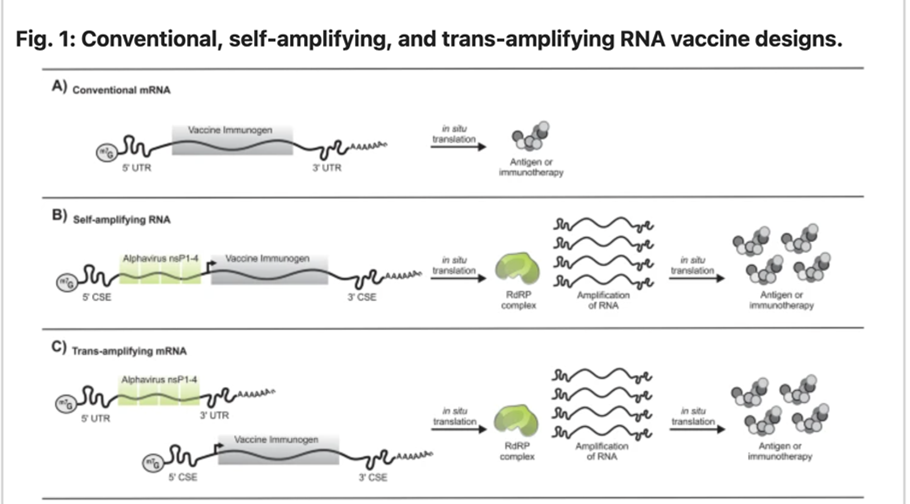
- An mRNA vaccine, such as those from Pfizer/BioNTech and Moderna, use messenger RNA that encodes the spike protein of the coronavirus.
- In other words, the mRNA directs the cell to produce copies of the spike protein, so that the immune system will recognise the spike if and when actual infection takes place, and mount a response.
- A self-amplifying mRNA vaccine is an improvement on the traditional RNA platform. It is a vaccine in which the delivered RNA multiplies inside the body.
- It encodes four extra proteins in addition to the vaccine antigen, and these enable amplification of the original strand of RNA once inside the cell.
- The new vaccine would have significant advantages such as easier storage, along with lower cost because its ‘self-amplifying’ design allows for smaller doses.
Source:
- New research: How self-replicating mRNA Covid-19 vaccines work, and what trial results show
- Explained: How self-replicating mRNA Covid-19 vaccines work, and what trial results show
Image source:
State of India’s Children Report
- Context: NITI Aayog and UNICEF India will jointly be developing the first report on the ‘State of India’s Children: Status and Trends in Multidimensional Child Development.’
- The report will develop frameworks to understand the multidimensional attainments and deprivation among children across health and nutrition, education, water and sanitation, household living standards, and a protective environment for children across states of India.
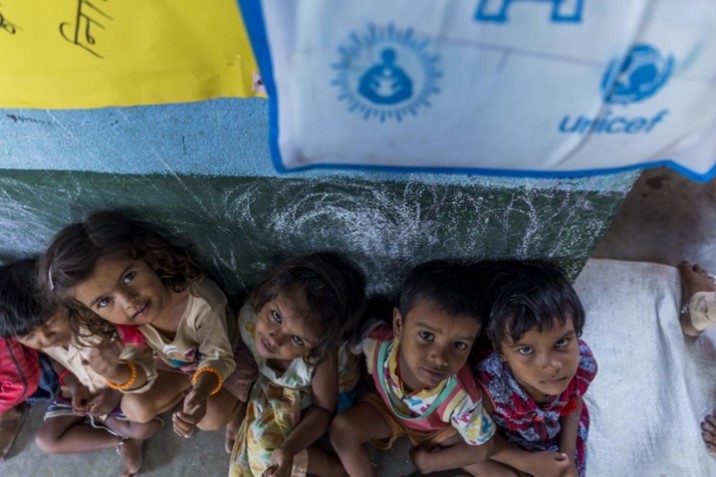
- This effort will contribute to the realization of India’s commitments to the 2030 Agenda and provide a set of policy recommendations for concerted action in terms of accelerating progress towards the SDGs to ‘leave no child behind’ and achieving their holistic development.
- Comprehensive measurement of the status of children will pave the way for multi-sectoral policies and programmes across different domains to reach the most vulnerable children.
- One in every third person in India is a child below the age of 18, while one in every fifth person is an adolescent between the ages of 10 to 19.
- Thus, this initiative will involve engagement with various stakeholders particularly children, adolescents and young people to jointly carve out solutions to harness the true potential of India’s demographic dividend.
- The project will be a whole-of-society approach involving Union Ministries, State Government, Academia, Civil Society Organizations and child rights collectives.
Source:
- Collaboration between NITI Aayog and UNICEF India to develop India’s first report on ‘State of India’s Children
- NITI Aayog, UNICEF to Develop Country’s First Report on ‘State of India’s Children'
Image source:
‘Vision 2047’
- Context: The Prime Minister’s Office (PMO) has been working on a blueprint for India@2047.
- It is a vision plan to make the country one of the world’s top three economies and bring it closer to developed nation status by the 100th year of its independence-2047.

- The plan will set specific targets for different economic sectors and will focus on shifting India from the ranks of merely being an emerging developing economy to a developed one where all its citizens have purchasing power that is among the best in the world.
- The key areas identified so far include agriculture, commerce, infrastructure, industry, urban landscape, security and defence, technology and governance.
- Benchmarking regulations, procedures and processes to international standards and aligning them to global standards will be a major area of work of this framework.
- All ministries would identify focus areas to position India as a leader in these sectors by executing plans such as restructuring and merging public sector banks to create 3-4 megabanks, developing 3-4 global champions in every sector by merger or restructuring, developing the semiconductor industry, showcasing India as a hub of green technology etc.,
- On the social and environment sector side, balanced development, ease of living, universal access to basic healthcare, enabling growth of MSMEs, eliminating the digital divide and use of technology to achieve true growth and welfare potential, revamping the energy mix to reduce dependence on fossil fuels and scaling up the share of renewables and new clean fuels like green hydrogen and methane are among the government’s medium-term policy goals.
Source:
- Govt embarks on ‘Vision 2047’ to put India on the developed economy’s path
- Vision India@2047 by May with targets for this decade
Image source:
India's ambitious wheat export plan could come under WTO lens: Deccan Herald
Essence: In the backdrop of disruptions caused to wheat supplies, due to Ukraine war, India is ready to fill the gap provided World Trade Organisation (WTO) rules permit. There are two parts to the subsidy given under the public stockholding programme, subsidy to the farmer by procuring at a price which is excess of international price and subsidy to the food consumer.
Under the Agreement on Agriculture (AoA) of WTO, aggregate measurement support, product-specific and non-product specific subsidies, is capped at 10% of the value of agricultural production for a developing country. Currently the food subsidy of India exceeds this cap, but India is protected under the “peace clause”.
However, under peace clause data on food procurement, stockholding, distribution, and subsidies has to be submitted and it must be established that subsidies are not trade distorting. Even a permanent solution to this peace clause will only allow public stockholding for food security and not for international export. To resolve this vulnerability, we must adopt direct benefit transfer as such transfers are not subject to the 10% cap.
Why should you read this article?
- To understand the working of our food security programme and types of subsidies offered under it.
- To know about the Agreement on Agriculture of WTO and various types of subsidies under it.
- To understand the problems with peace clause and the authors recommendation.
Source:
The goal of an energy secure South Asia: The Hindu
Essence: The editorial discusses the possibility of energy security with the help of new energy infrastructure, energy trade and clean energy dependence between the SAARC countries. Since the region has been hosting 25% of global population, electricity demand in these developing economies is on the rise. Providing reliable, quality electricity at cheaper rates and protecting consumer interest is the mandate. But the issues are far too many- power generation, transmission, distribution, rural coverage, research, environment and clean energy transition and job creation.
Each nation has a different strategy for itself- Nepal primarily depends on HEP, India depends on coal, Bangladesh on natural gas and Sri Lanka on imported oil supplies. Amidst this, solar power presence provides a hope for the mandate of all nations- clean, cheap, reliable energy with job creation.
Regional trade agreements like India-Nepal petroleum pipeline, India-Bhutan HEP joint venture, Myanmar-Bangladesh-India gas pipeline, BBIN energy cooperation and TAPI pipeline are the need of the hour. Energy trade process has the possibility of augmenting peace process through development and employment creation. What is need is to have climate-proof infrastructure, along with private financing in energy domain to cater to energy hungry south Asia.
Why you should read this article?
- To know about the comparison in electrification and technologies in south Asian countries.
- To understand the areas of focus for energy growth.
Source:
All roads connect Delhi and Brussels: ORF
Essence: The editorial speaks about the geopolitical alignment between India and European Union as a key factor to move to higher degrees of integration for mutual benefit. Both regions have said to be natural allies, with cultural, people-to-people and trade exchanges happening from the ancient times. Exchanges must happen in the present times with the 3 important challenges- green transition, digital transformation and geopolitics.
The European Green Deal (to achieve net zero by 2050) needs to be matched by India and China if the world wants to avert climate crisis. India has been attempting green initiatives but European energy diversification, away from Russian economy is slow and its strategies to charge Carbon Border Adjustment Mechanism is partial. European finance, private participation and collaborations with India is need of the hour.
Similarly, digital transformation through GDPR/data protection norms and Digital Services Act of Europe and India’s aadhar pave way for social, moral and legal ways to lead into digital societies for future. Moving away from China for development of 5G, developing dual-use technology is the way forward.
Both these regions have been threatened with violence from neighborhood, Russia and China and they need to restore balance. Need is to share empathy and project hard power through economic development, military cooperation, with the vision of upholding democracy and pluralism.
Why you should read this article?
- To know the reasons of multifaceted alliance between India and European Union.
- To understand the areas of focus for India- EU partnership.
Source:
Kerala Farmer Daughter
Background:
Kerala residents Haripriya and Sivapriya grow seasonal vegetables on 80 cents of land. Organic farming came to their rescue when they decided to help their parents make ends meet.

About the Kerala Farmer Daughter
- Haripriya and Sivapriya, students at a school in Attingal, Thiruvananthapuram, bring books, a lunchbox, and a bag full of freshly gathered veggies from their farm to sell to the teachers.
- Their family has incurred heavy debts due to their poor financial conditions. Their efforts have lifted them out of poverty and made them role models in the community.
- These girls began planting vegetables in gunny bags outside their home. After seeing their efforts, three neighbours banded together to assist them and gave them free land for cultivation.
- As they lacked the financial means to buy fertilisers and other inputs from stores, they obtained seeds from government organisations and used traditional methods and manure.
- Their financial situation has improved as the production began to increase and was purchased by the girls' teachers and neighbours.
Quote: Maturity is having the courage to use one’s own intelligence."- Immanuel Kant.
Source:
Share the article
Get Latest Updates on Offers, Event dates, and free Mentorship sessions.

Get in touch with our Expert Academic Counsellors 👋
FAQs
UPSC Daily Current Affairs focuses on learning current events on a daily basis. An aspirant needs to study regular and updated information about current events, news, and relevant topics that are important for UPSC aspirants. It covers national and international affairs, government policies, socio-economic issues, science and technology advancements, and more.
UPSC Daily Current Affairs provides aspirants with a concise and comprehensive overview of the latest happenings and developments across various fields. It helps aspirants stay updated with current affairs and provides them with valuable insights and analysis, which are essential for answering questions in the UPSC examinations. It enhances their knowledge, analytical skills, and ability to connect current affairs with the UPSC syllabus.
UPSC Daily Current Affairs covers a wide range of topics, including politics, economics, science and technology, environment, social issues, governance, international relations, and more. It offers news summaries, in-depth analyses, editorials, opinion pieces, and relevant study materials. It also provides practice questions and quizzes to help aspirants test their understanding of current affairs.
Edukemy's UPSC Daily Current Affairs can be accessed through:
- UPSC Daily Current Affairs can be accessed through Current Affairs tab at the top of the Main Page of Edukemy.
- Edukemy Mobile app: The Daily Current Affairs can also be access through Edukemy Mobile App.
- Social media: Follow Edukemy’s official social media accounts or pages that provide UPSC Daily Current Affairs updates, including Facebook, Twitter, or Telegram channels.


